Kick Off Summer with a Skin Protection Campaign!
There’s a growing body of research that says the right amount of sun is good for us (for vitamin D production, for instance). Considering we’re entering the season of sun (aka summer), this research is welcome news. However, the key words are “the right amount.” We all know it’s easy to overdo it.

Getting too much sun exposure can be a serious problem, triggering premature aging and even skin cancer. In fact, skin cancer is now the most common type of human cancer worldwide. The World Health Organization reports that one out of every three cancer diagnoses is skin cancer.
The typical response to the potential of overdoing it is to slather on sunscreen, right? But there are some issues with sunscreen, too, that are a concern. The skin is the largest organ of the body, and it absorbs everything what’s rubbed on. Knowing this, I wondered, “Is there nothing else we can do to protect our skin, or at least help it deal better with the sun?”
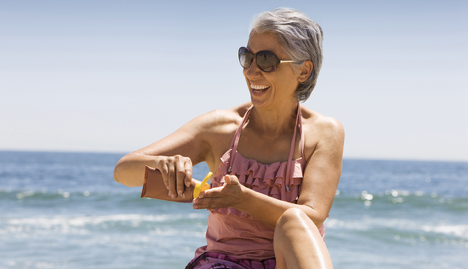
The answer is a loud “YES!” It turns out that certain foods can act as a natural sunscreen and thus help your body protect itself from the damage that leads to skin cancer.
This protections comes in the form of antioxidants (compounds found in plant foods that protect from free radical damage). Research shows they do much more than lower your risk for things like heart disease and diabetes. Antioxidants are photo-protective—they protect your skin from light; they prevent oxidative damage from the sun, and they reduce inflammation of your skin cells.
So the bottom line: If you want to avoid sunscreen use or at least minimize its use, then wear a sun hat, monitor the amount of time you’re in the sun, and eat foods high in sun-protective antioxidants. Here are the ten best foods for sun protection plus a recipe to kick off the summer and your skin protection campaign.
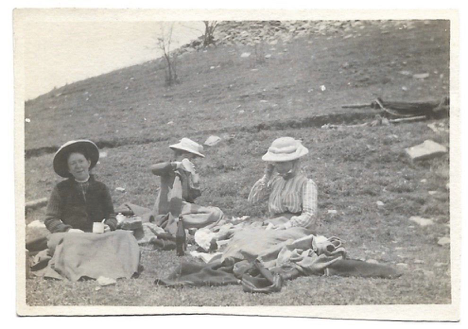
1) Grapes and Grape Seed: Grapes contain procyanidin, a powerful polyphenol that prevents cancer, attacking melanoma cells. Research shows that grapes and grape seed extracts offer sun protection by reducing the effects of UV rays on skin.
2) Garlic and Onions: It’s been found that the oils in garlic and onions slow skin cancer and reduce tumors, due to their organo-sulfur compounds.
3) Pomegranate: Research shows promise for the use of pomegranate extract, oil, and juice to prevent UVB-induced skin cancer.
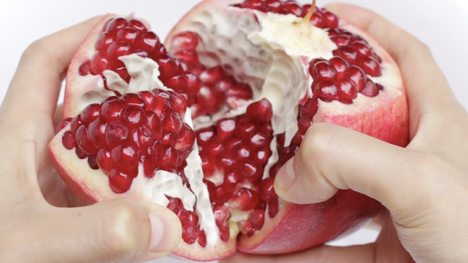
4) Green Tea: One major polyphenol in tea is EGCG, which protects skin against UV radiation effects. Green tea studies show it has the ability to boost DNA repair, preventing non-melanoma skin cancers. Matcha green tea is especially potent.
5) Soy Beans: Soy foods are rich in compounds called isoflavones, which bind to estrogen receptors in the skin and help reduce wrinkles. They also improve skin elasticity, increase collagen synthesis, and have an overall skin protective effect.
6) Turmeric: Its main active ingredient is curcumin, which has been shown to significantly reduce cancerous skin lesions and inhibit cancer cell signaling.
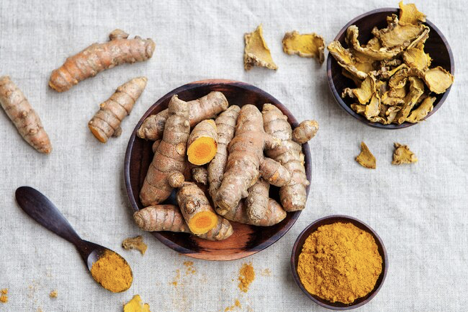
7) Dark Green Leafy Vegetables: Research says a high intake of green leafy vegetables (such as kale, spinach, collard greens, and Swiss chard) can help to reduce skin cancer risk. This protective effect comes from their lutein and beta carotene content.
8) Ginger: Ginger is effective at slowing tumor growth and killing skin cancer cells, and fresh ginger juice works well in treating burns and lesions. And gingerol, a chemical compound found in fresh ginger, has been shown to block the growth of skin cancer cells.
9) Milk Thistle Seed: Tests proved that milk thistle compounds applied both before and after UVB exposure protect and can even heal sun damage. This suggests that it actually blocks cancer pathways and doesn’t just act like sunscreen. This protection is due to silymarin, a phytochemical found in milk thistle.
10) Mushrooms: The Chaga mushroom, especially, has been studied for its ability to suppress tumor growth. And its extract has been shown to cause melanoma cell death.
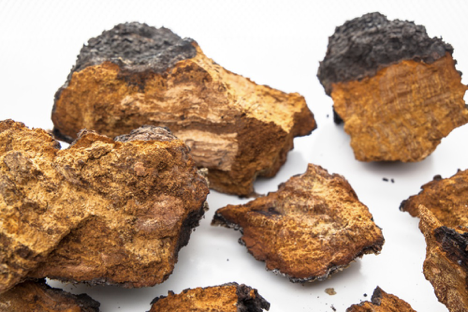
Now as promised, here’s a delicious recipe using the chaga mushroom that could become a go-to for a quick morning meal, as well as a tasty way to start your skin protection campaign.
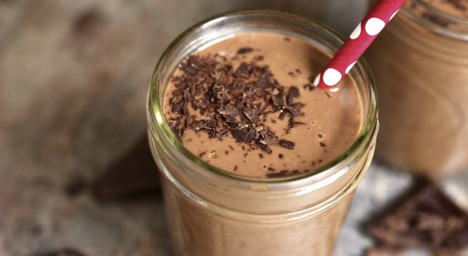

1/2 frozen banana sliced
1 cup frozen berries
1 cup chaga tea, cold (see recipe below)
1 tablespoon unsweetened cocoa powder
1 pinch cinnamon and allspice optional
CHAGA MUSHROOM TEA
1 cup chaga mushroom powder
4 cups cold water
pure maple syrup for sweetening, if desired
Directions:
Add Recipe to Cook'n

Getting too much sun exposure can be a serious problem, triggering premature aging and even skin cancer. In fact, skin cancer is now the most common type of human cancer worldwide. The World Health Organization reports that one out of every three cancer diagnoses is skin cancer.
The typical response to the potential of overdoing it is to slather on sunscreen, right? But there are some issues with sunscreen, too, that are a concern. The skin is the largest organ of the body, and it absorbs everything what’s rubbed on. Knowing this, I wondered, “Is there nothing else we can do to protect our skin, or at least help it deal better with the sun?”

The answer is a loud “YES!” It turns out that certain foods can act as a natural sunscreen and thus help your body protect itself from the damage that leads to skin cancer.
This protections comes in the form of antioxidants (compounds found in plant foods that protect from free radical damage). Research shows they do much more than lower your risk for things like heart disease and diabetes. Antioxidants are photo-protective—they protect your skin from light; they prevent oxidative damage from the sun, and they reduce inflammation of your skin cells.
So the bottom line: If you want to avoid sunscreen use or at least minimize its use, then wear a sun hat, monitor the amount of time you’re in the sun, and eat foods high in sun-protective antioxidants. Here are the ten best foods for sun protection plus a recipe to kick off the summer and your skin protection campaign.

1) Grapes and Grape Seed: Grapes contain procyanidin, a powerful polyphenol that prevents cancer, attacking melanoma cells. Research shows that grapes and grape seed extracts offer sun protection by reducing the effects of UV rays on skin.
2) Garlic and Onions: It’s been found that the oils in garlic and onions slow skin cancer and reduce tumors, due to their organo-sulfur compounds.
3) Pomegranate: Research shows promise for the use of pomegranate extract, oil, and juice to prevent UVB-induced skin cancer.

4) Green Tea: One major polyphenol in tea is EGCG, which protects skin against UV radiation effects. Green tea studies show it has the ability to boost DNA repair, preventing non-melanoma skin cancers. Matcha green tea is especially potent.
5) Soy Beans: Soy foods are rich in compounds called isoflavones, which bind to estrogen receptors in the skin and help reduce wrinkles. They also improve skin elasticity, increase collagen synthesis, and have an overall skin protective effect.
6) Turmeric: Its main active ingredient is curcumin, which has been shown to significantly reduce cancerous skin lesions and inhibit cancer cell signaling.

7) Dark Green Leafy Vegetables: Research says a high intake of green leafy vegetables (such as kale, spinach, collard greens, and Swiss chard) can help to reduce skin cancer risk. This protective effect comes from their lutein and beta carotene content.
8) Ginger: Ginger is effective at slowing tumor growth and killing skin cancer cells, and fresh ginger juice works well in treating burns and lesions. And gingerol, a chemical compound found in fresh ginger, has been shown to block the growth of skin cancer cells.
9) Milk Thistle Seed: Tests proved that milk thistle compounds applied both before and after UVB exposure protect and can even heal sun damage. This suggests that it actually blocks cancer pathways and doesn’t just act like sunscreen. This protection is due to silymarin, a phytochemical found in milk thistle.
10) Mushrooms: The Chaga mushroom, especially, has been studied for its ability to suppress tumor growth. And its extract has been shown to cause melanoma cell death.

Now as promised, here’s a delicious recipe using the chaga mushroom that could become a go-to for a quick morning meal, as well as a tasty way to start your skin protection campaign.

Chocolate Chaga Smoothie
Ingredients:
1/2 frozen banana sliced
1 cup frozen berries
1 cup chaga tea, cold (see recipe below)
1 tablespoon unsweetened cocoa powder
1 pinch cinnamon and allspice optional
CHAGA MUSHROOM TEA
1 cup chaga mushroom powder
4 cups cold water
pure maple syrup for sweetening, if desired
Directions:
1. Combine in blender: 1/2 sliced frozen banana, 1 cup frozen berries, 1 cup cold chaga tea and 1 tablespoon cocoa powder
2. Add a pinch of cinnamon and allspice if desired
3. Blend until smooth. Add more chaga tea if consistency is too thick.
CHAGA MUSHROOM TEA
1. Combine the chaga powder and 4 cups cold water in a small saucepan
2. Bring to a boil, then turn off the heat and let steep for 10 to 15 minutes
3. Strain and serve with maple syrup for sweetness, if desired
2. Add a pinch of cinnamon and allspice if desired
3. Blend until smooth. Add more chaga tea if consistency is too thick.
CHAGA MUSHROOM TEA
1. Combine the chaga powder and 4 cups cold water in a small saucepan
2. Bring to a boil, then turn off the heat and let steep for 10 to 15 minutes
3. Strain and serve with maple syrup for sweetness, if desired
Recipe formatted with the Cook'n Recipe Software from DVO Enterprises.
Sources:
- www.uihere.com
- www.aarp.org
- www.pinterest.com
- www.youtube.com
- www.webmd.com
- www.mushroom-revival.com
- www.indigo-herbs.co.uk
 Alice Osborne
Alice Osborne
Weekly Newsletter Contributor since 2006
Email the author! alice@dvo.com
